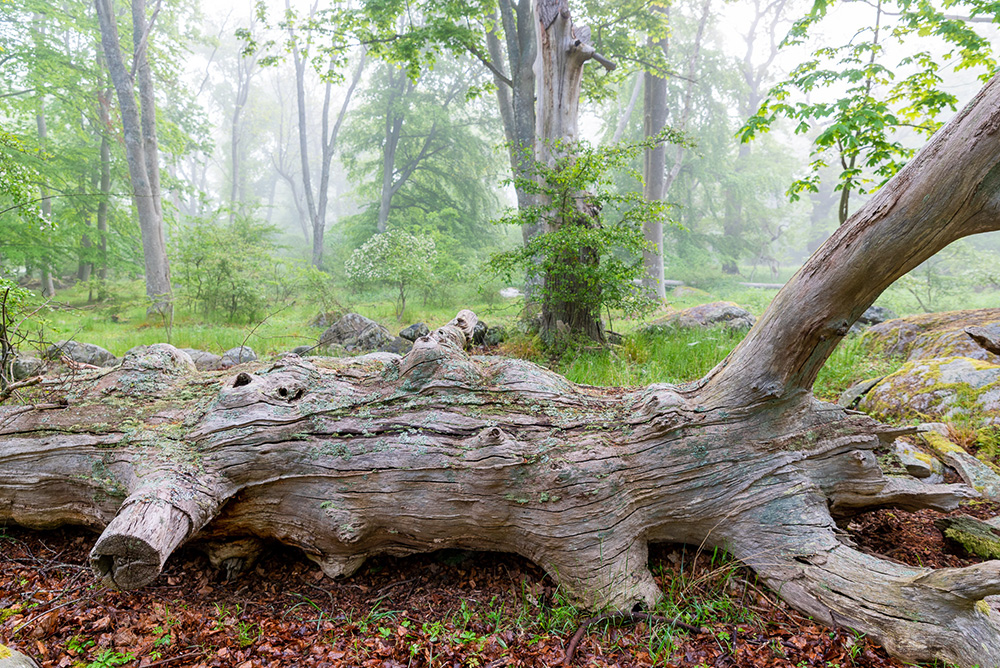Things you can do to increase the amount of dead wood
- Veteranise, if there are suitable trees. See chapter on veteranisation.
- Ring-bark trees, partially or fully, and preferably at a tree’s distance to paths and roads.
- Identify locations for dead wood piles, and place dead wood from trees felled locally there. For endangered species reliant on fallen trees, it may be necessary to enrich a protected area with really large dead oak wood, which can last for centuries.
- If necessary, standing dead trees can be created by an arborist or woodland harvester. But remember that a tree that has died and remains in place contains many more habitats.
- If deciduous trees have been felled in an area containing stag beetles, it might be a good idea to create a stag beetle pile. See the chapter on stag beetle piles.
- It is much better to create small amounts of dead wood continuously, than a large amount on one occasion.
- Piles of branches and tops can become deathtraps for wood-living insects, if the piles remain over the summer: female beetles can lay their eggs in the wood, which later gets chipped. So, plan your management such that felling and clea- ring is done after August 1, and chipping is done before April 1st.
In restoration and ongoing management, by always being mindful of the wood that is dead but very full of life, it is possible to create a large variation in habitat, and consequently also a landscape very rich in species.

